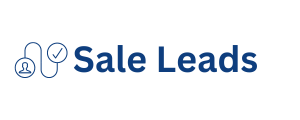Among the many problems that threaten digital marketing and advertising, fraud is one of the recurring ones. Cybercriminals have understood that digital advertising is a potential source of juicy revenue and have set out to grab as much of the pie they can get. At the same time, there are also questionable practices within the legitimate part of the industry. All this means that the numbers are not always totally realistic and that marketers must be very aware of this reality.
The data makes it clear that fraud is quite widespread and that brands have come across it regularly. The latest study was conducted by WhiteOps and Renegade, after conducting a survey of just over a hundred leaders in digital marketing last fall. The data indicates that most of them have seen fraud in recent times. Thus, about two-thirds of those Jamaica Mobile Database surveyed say that their company has experienced some type of advertising fraud in the twelve months prior to the survey. These are quite large numbers, which make it clear that the issue is not an anecdote and that it should be positioned among the key concerns of marketers. What are the most common types of fraud? The list shows old acquaintances. Thus, 36% recognize that they have come across fraud in the purchase of media (for example, bots that click on ads). This is the most common type of fraudulent operation.
This is followed by fraud in lead generation (23%, with bots covering forms with false or stolen information), in retargeting (20%, retargeting for bots instead of humans), in inventory (7%), in abuse of inventive programs (12%, by bots that play with the system for profit) or in competitive assaults (5%, includes any type of fraud, but has its competitors behind). Although, perhaps, the most negative data in the study are Brother Cell Phone List not so much those that speak directly of fraud, but rather those that demonstrate the impact it has on the day-to-day of brands in marketing and advertising on the net and how little they can do to protect against its impact. This is, as much as marketers are aware that fraud is there, their margin of maneuver to avoid its consequences or to neutralize the problems that it entails is very limited. Thus, from the outset, 43% of those surveyed recognize that, even if they realize that suspicious things are happening on their website, they cannot estimate how much traffic to their site actually comes from bots . You could say that they operate with closed eyes. They know there is a problem and that it is there, but they cannot exactly see it.
Likewise, fraud also contaminates their databases . 22% assume that about a quarter of their first party data is actually false or fraudulent. This issue is especially tricky, because data has become one of the key pieces of business strategy. In addition, companies are increasingly eager to break their dependence on the large networks and the information they provide, which is why they have begun to enhance the collection of their own data and its use. Separating the wheat from the chaff is therefore much more important, as is potentially more serious the threat that sources of information are being filled with false and illegitimate data.

